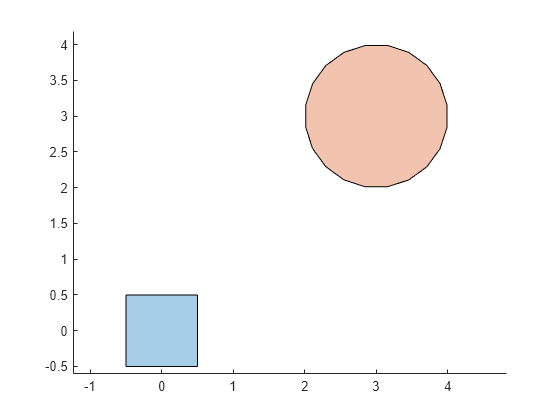turningdist
polyshape オブジェクト間のターニング距離を計算
説明
td = turningdist(poly1,poly2)polyshape 配列における、対応する要素ペア間のターニング距離の配列を返します。2 つの polyshape オブジェクトの間のターニング距離は、回転やスケーリングとは無関係に、形状がどの程度一致しているかを測定した値です。ターニング距離が 0 に近いということは、ほぼ一致していることを意味します。値が大きいほど、2 つの形状の差異は大きくなります。
TD(i,j) は、poly1 の i 番目の polyshape と poly2 の j 番目の polyshape の間のターニング距離です。
例
入力引数
出力引数
参照
[1] Arkin, E.M., Chew, L.P., Huttenlocher, D.P., Kedem, K., and Mitchell, J.S.B. "An efficiently computable metric for comparing polygonal shapes." IEEE Transactions on Pattern Analysis and Machine Intelligence. Vol. 13, Number 3, 1991, pp. 209-16. doi:10.1109/34.75509.
拡張機能
バージョン履歴
R2018a で導入

